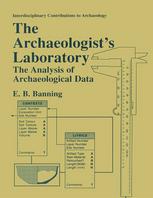

Most ebook files are in PDF format, so you can easily read them using various software such as Foxit Reader or directly on the Google Chrome browser.
Some ebook files are released by publishers in other formats such as .awz, .mobi, .epub, .fb2, etc. You may need to install specific software to read these formats on mobile/PC, such as Calibre.
Please read the tutorial at this link: https://ebookbell.com/faq
We offer FREE conversion to the popular formats you request; however, this may take some time. Therefore, right after payment, please email us, and we will try to provide the service as quickly as possible.
For some exceptional file formats or broken links (if any), please refrain from opening any disputes. Instead, email us first, and we will try to assist within a maximum of 6 hours.
EbookBell Team

4.3
28 reviews"This book looks like a real boon. Teachers will welcome it; "Where's my Banning?!" will become a common cry among students; and it will be welcome among contract archaeologists and amateur groups too."
(Antiquity, 75, 2002)
"[…] I use this text in my upper level introductory lab course. [...] The Archaeologist's Laboratory provides the breadth and detail that allows instructors to pick and choose what they want to use. [...]Overall, I consider this to be the best archaeological lab. book on the market. The students all agreed that the text was clearly written and easy to understand. If ordered as a text for a class of six or more students, the price is reduced... In sum, both my students and I highly recommend this text."
(Lisa Nagaoka, University of North Texas (Geoarchaeology, An International Journal, 17:8, 2002)
"Banning has succeeded admirably well in producing a fine work for his target audience. [...]Banning's clear writing style and ability to boil down challenging concepts so that they are easily understandable for the undergraduate student (and the professors who must instruct them!) make this an immensely useful reference tool."
(Randall W. Younker, Andrews University (Bulletin of the American Schools of Oriental Research, 328, 2002)